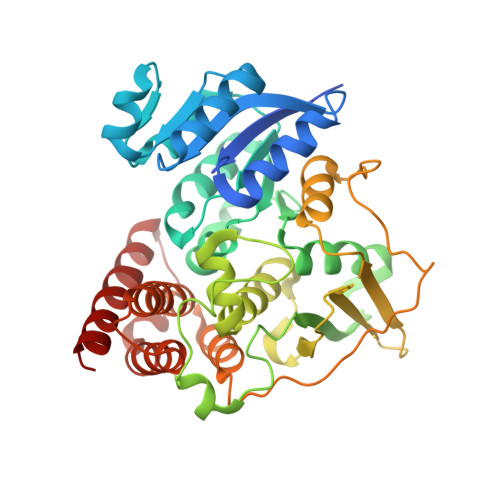Inhibition of 1-deoxy-D-xylulose-5-phosphate reductoisomerase by lipophilic phosphonates: SAR, QSAR, and crystallographic studies.
Deng, L., Diao, J., Chen, P., Pujari, V., Yao, Y., Cheng, G., Crick, D.C., Prasad, B.V., Song, Y.(2011) J Med Chem 54: 4721-4734
- PubMed: 21561155
- DOI: https://doi.org/10.1021/jm200363d
- Primary Citation of Related Structures:
3RAS - PubMed Abstract:
1-Deoxy-D-xylulose-5-phosphate reductoisomerase (DXR) is a novel target for developing new antibacterial (including antituberculosis) and antimalaria drugs. Forty-one lipophilic phosphonates, representing a new class of DXR inhibitors, were synthesized, among which 5-phenylpyridin-2-ylmethylphosphonic acid possesses the most activity against E. coli DXR (EcDXR) with a K(i) of 420 nM. Structure-activity relationships (SAR) are discussed, which can be rationalized using our EcDXR:inhibitor structures, and a predictive quantitative SAR (QSAR) model is also developed. Since inhibition studies of DXR from Mycobacterium tuberculosis (MtDXR) have not been performed well, 48 EcDXR inhibitors with a broad chemical diversity were found, however, to generally exhibit considerably reduced activity against MtDXR. The crystal structure of a MtDXR:inhibitor complex reveals the flexible loop containing the residues 198-208 has no strong interactions with the 3,4-dichlorophenyl group of the inhibitor, representing a structural basis for the reduced activity. Overall, these results provide implications in the future design and development of potent DXR inhibitors.
Organizational Affiliation:
Department of Pharmacology, Baylor College of Medicine, Houston, Texas 77030, United States.



















